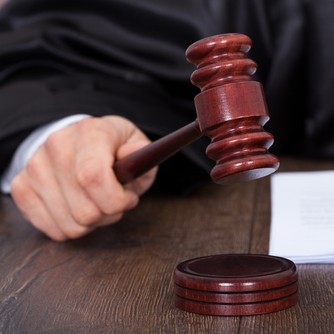Judges reflect on dealing with difficult pro se litigants

Image from Shutterstock.
In the Northern District of Illinois, judges still remember pro se litigant Bart Ross.
Ross was a frequent filer in Chicago federal court, where, the Chicago Tribune says, his filings over a decade often compared doctors, judges and lawyers to Nazis and terrorists. In late 1994, Judge Joan Lefkow dismissed a medical-malpractice suit by Ross against the hospital where he’d been treated for cancer.
Five months later, Lefkow came home to discover her husband, 64-year-old Michael Lefkow, and her mother, 89-year-old Donna Grace Humphrey, shot dead. The case was solved about two weeks after the murders, when a West Allis, Wisconsin, police officer witnessed Ross committing suicide in his van. His suicide note took responsibility for the murders.
That’s one reason that the district takes security very seriously when it comes to pro se litigants, according to Chief Judge Ruben Castillo. Castillo spoke today as the moderator of an ABA Annual Meeting panel sponsored by the association’s Judicial Division, “The Unstable Pro Se Litigant: Strategies for Ethically Dealing with the Difficult Unrepresented Litigant.”
Not every unstable litigant—a person with a mental illness or a borderline personality disorder—is necessarily violent, said Eric Drogin, the first panelist to speak. Drogin is a psychologist at Harvard Medical School, where he’s part of the Program in Psychiatry and the Law. He also has a JD and is a past chair of the ABA’s Section of Science and Technology Law. He listed a variety of mental illness diagnoses and the likely behavior in court of people with those problems. Depressed people and people with substance dependence, he said, might not show up at all, or might be completely unprepared if they do.
But they can still pose serious problems, the panelists agreed. Drogin said filings from people with certain diagnoses “can be measured by the pound” or even the ton. Others may be antagonistic toward the bench, cry a lot or seek the spotlight inappropriately. “Litigation stress” can crank it up.
And those behaviors can pose serious problems for judges, who have to maintain order while respecting the litigant’s rights.
“One of the things we’re doing is trying so hard to make sure the person has access to the courts,” said U.S. District Judge Virginia Kendall of the Northern District of Illinois. “And we also don’t want them to run roughshod over the court.”
Judge Frank J. Bailey of the U.S. Bankruptcy Court for Massachusetts said one reason these litigants can be difficult is that their cases are not about money to them, which makes their reactions harder to predict. Often, they resist settling because they lose their forum.
If a litigant seems to need attention, Bailey said, he’ll offer limited opportunities to get it by scheduling hearings that can go long or sending the case to mediation. Castillo added that it’s good to mention summary judgment early on, so attention-seekers realize there may not be a television-style trial.
But the judges agreed that keeping control of the courtroom is vital, and they advised using a firm “judge voice.” They also agreed that it’s vital to identify problem litigants early—perhaps by the volume, frequency or nature of their filings—and plan accordingly. If someone seems dangerous, they said, plan to have security present or reduce their opportunities to show up to court.
Attorney Jadd Masso, a litigator and partner at the firm Strasburger in Dallas who specializes in defending problem cases, said defense lawyers should pick their battles carefully. In one case his firm handled, a litigant who was unruly during a deposition was arrested and brought to court in shackles. That spawned a civil rights case and years of further litigation, including a trip to the 5th U.S. Circuit Court of Appeals at New Orleans.
A pro se litigant “is sort of a frightened animal,” he said. “You don’t really know [whether they’re harmless], so you have to treat them with kid gloves and be polite and professional and keep it focused on the law.”
• See what people are saying about the events on social media, and follow along with our full coverage of the 2015 ABA Annual Meeting.
Write a letter to the editor, share a story tip or update, or report an error.


